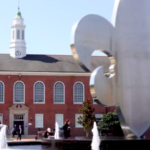Remedial Rules for Radicals
Campus Progress is bent out of shape over the mere prospect of federal and state budget cuts in higher education programs. “Today students are taking bold action to highlight the crisis in college affordability and access,” Pedro de la Torre III, Campus Progress’s Advocacy Senior Associate, stated on March 4, 2010. “We can no longer afford to ignore our shortcomings in these areas: the average student debt for graduates has reached more than $23,000, and at least 37 states are slashing higher education budgets which will lead to increasing tuition and less student aid.”
“State legislatures, college administrators and Congress have a responsibility to the next generation to find solutions to this crisis,” de la Torre averred. “The Senate, for example, should pass legislation modeled after the Student Aid and Fiscal Responsibility Act, which would cut wasteful subsidies to student loan companies and use the $87 billion in savings to increase Pell grants, invest in community colleges and minority serving institutions, and fund modernization and repair programs on campuses.”
Perhaps these angry young men and women should direct their ire at the public schools which feed students to colleges and universities. “Remedial classes are taken by students who are not prepared for entrance level courses taken by most college students,” Rubria Jessica Hintz of the Platte Institute writes. “These young scholars and their parents fully expect that successful graduation from an accredited high school has prepared them for success; however, 21% of all post secondary students were enrolled in at least one remedial class in 2003-04.”
“Although this is an alarming statistic, a significant number of these students may be older adults returning to college.” Two years ago, the Chronicle of Higher Education reported that “Most Students in Remedial Classes in College Had Solid Grades in High School.”
Malcolm A. Kline is the Executive Director of Accuracy in Academia.




